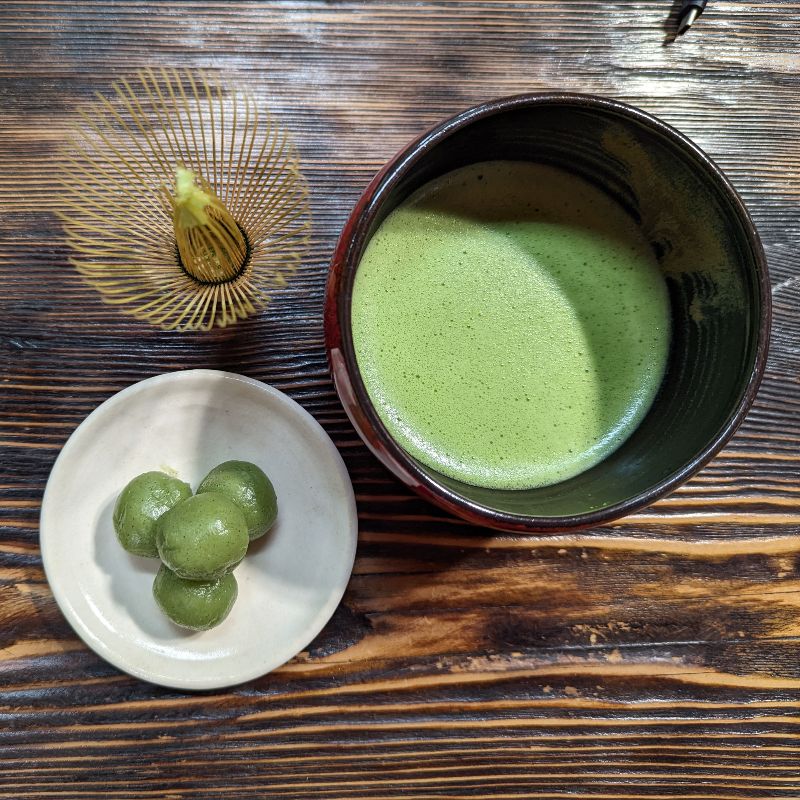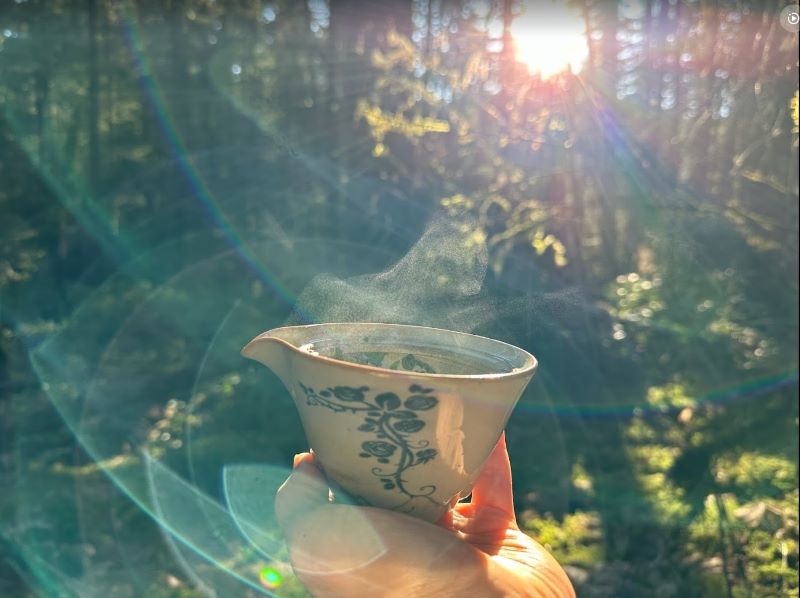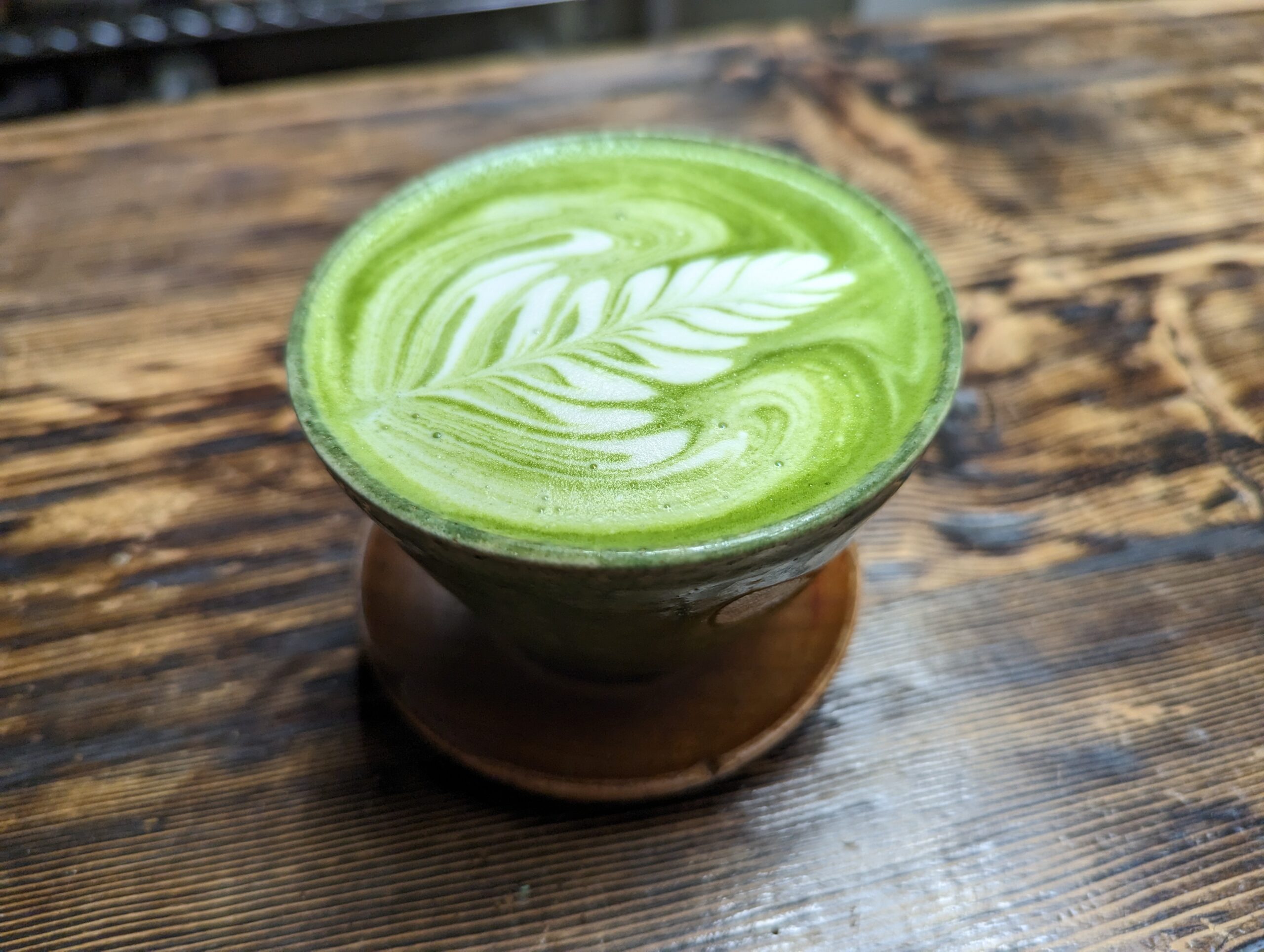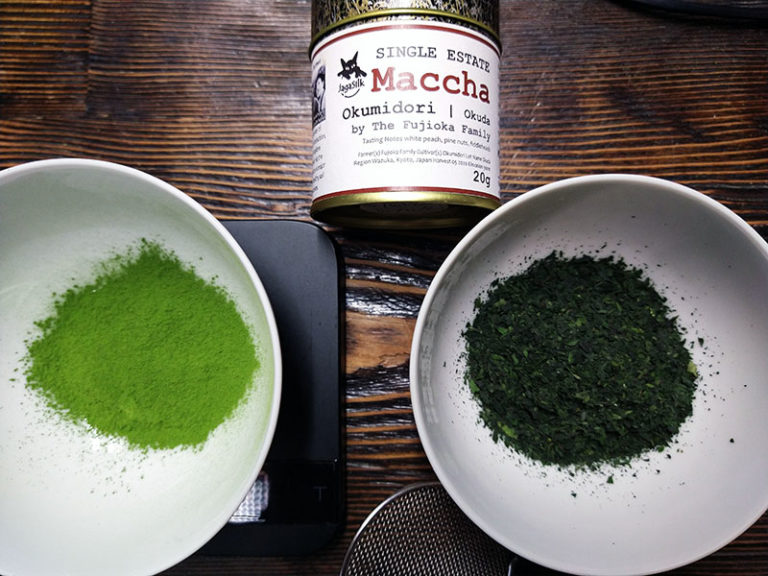
To qualify as a maccha, the leaves of camellia sinensis need to be grown under shade, harvested during the first harvest, steamed and dried flat, then deveined and destemmed before being milled into a fine powder. As a result, even though maccha is a powdered green tea, not all powdered green tea is considered maccha.
If you are not careful, you can end up with a non-shade grown green tea that has not been deveined nor de-stemmed; and a tea that has been exploded and sprayed to death, laced with MSG and other enhancers, picked by a starving workforce, and sold oxidised because it has been on a shelf for two years.
A part of the equation that often gets overlooked is how fine the powder needs to be. We have learned that though 10 microns is the official screen size for true maccha, when it’s milled for export it is often milled coarser. We have also learned that the more supple the leaves, the finer they mill, meaning the opposite for denser leaves. If you mill a dense leaf too fine, we have learned that you can burn off the umami. You can also mill so finely that you have released too much surface area and allow for too much bitterness to come through using our preparation standard of 2g maccha, 90ml water (30ml for latte shots), 60~70 C, 15s of whisking.

Finding Real Maccha
There are many different grades and types of maccha. It is important to first be sure that what you are purchasing is real. All of JagaSilk’s maccha has gone through the process that makes maccha maccha. Namely it has been shade-grown, steamed, de-veined, de-stemmed, and artisan stone-ground. It is the raw “spice”, with no flavour enhancers, colour enhancers, sugar, or anything; just pure, Japanese green tea.
Understanding Grades of Maccha
Fine Tea
Just like fine wine uses the best grapes, fine maccha uses the best leaves. These are found in the young, new growth, of the green tea tree (Camellia Sinensis).
Picking Season
The May pick Ichibancha (1st flush) is the best tea for many reasons. Mostly it can be attributed to the young leaves’ slow growth coming out of winter, concentrating the sweet and full-bodied amino acids, chlorophyll, and nutrients. Ichibancha Maccha has an unbeatably smooth texture.
In July (the 2nd flush) you will find a lot more leaves that grow quickly and don’t offer the same rich and full flavours; however, some people love this flush for its light body and bitter taste, sometimes offering a nice earthy flavour. Because of chlorophyll’s chemical relationship with tannin, the 2nd flush has a higher concentration of the latter and tends to have a resulting pucker and dryness similar to young red wine.
The Art of Maccha Blending
Within each flush, the leaves are blended and sometimes cross blended to create a spectrum of quality versus accessibility. Premium maccha is created using “bluish” green leaves with perfect shape and a full-bodied aroma and flavour. Judges with experience assess the variety of flavours, textures, colours, and smells presented to them. The best maccha can sell for thousands of dollars a kilogram at auction.
Other Factors in Maccha Grading
Storage, the stone grind, and age can all affect the quality of your maccha. The stone grinding process is an artisan technique and a bad grind can ruin otherwise premium maccha. Humidity, time, and strong odours also have the potential to ruin your tea.
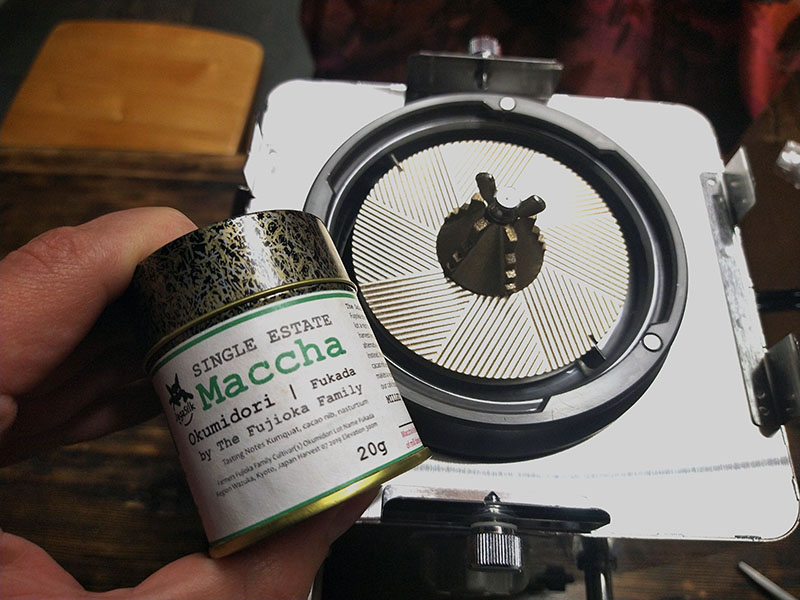
Sourcing Ethical Maccha
We choose to only deal with Japan because we feel that the strict labour standards make for an ethical interaction. Over a thousand years making the tea does not hurt the relationship either. Other countries can be relaxed on labour standards, chemical spray legislation, and they don’t always hold true to what makes maccha maccha.
Fresh Maccha
We mill our tencha – the base for maccha – fresh in our teabar, on a Japanese mill that was built by experts in their field. Working closely with their engineers, we strive for an ideal maccha. Every package is transparently marked with mill date, harvest date and region information.
How to Store Maccha
Store your tea in a cool, dark, dry place away from strong odours. Keep unopened tea in the fridge. After 3 or 4 weeks open, your tea will have lost its stuff. You can still enjoy it, just don’t expect it to taste the same. We recommend using old maccha in baking, rehydrating premium old tea leaves and cooking with them, etc.
Fresh tea is teamwork. Having the knowledge and being informed on how your tea has made it to your home, coupled with your proper care will make for delicious and fresh tea every time.
Share this article
Search the blog
JagaSilk Links
Article Categories
- Uncategorized (13)
- JagaSilk (10)
- JagaVision (2)
- Other (1)
- Tutorial (7)
- Maccha Archives – JagaSilk (14)
- Tea (16)
- Origin (7)
Subscribe to our Newsletter
Love maccha? Sign up and get 10% off your first order. You'll also receive new articles and video content!

